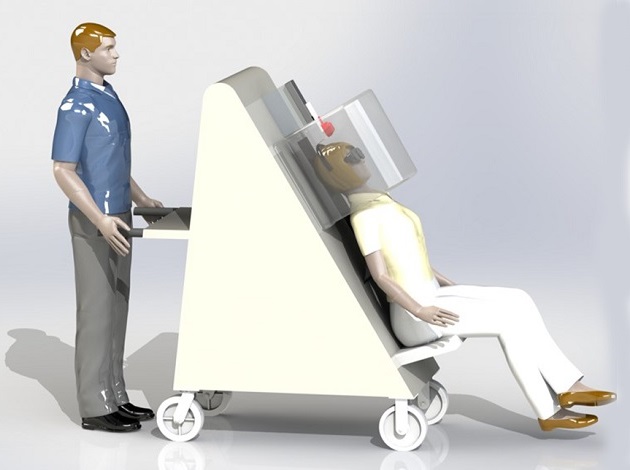Portable PET Scanner to Detect Earliest Stages of Alzheimer’s Disease
Posted on 05 Nov 2024
During a positron emission tomography (PET) scan, a radioactive tracer is injected into the bloodstream, where it accumulates in the targeted tissue and emits signals that the PET scanner detects. These signals are then converted into images. However, current PET scanners often suffer from low spatial resolution, which limits image quality and hinders the reliable quantification of biomarkers such as amyloid plaques and tau tangles—protein aggregates associated with Alzheimer’s disease. Researchers are now developing a portable, high-resolution PET scanner capable of detecting the early stages of Alzheimer’s disease.
This new PET scanner, being created by researchers at Weill Cornell Medicine (New York, NY, USA), features an upright design that allows patients to sit in a chair that moves with the unit, enhancing portability and accessibility. This innovation enables the scanner to be transported to medical centers lacking advanced brain imaging technologies, thereby extending high-quality care to a more diverse patient population. In a proof-of-concept study, the team developed the Prism-PET scanner, which boasts the highest resolution of any PET scanner to date. This device can identify "hot spots," or areas with elevated concentrations of the radioactive tracer, that are less than 1 mm in diameter when tested with brain phantoms, which mimic human tissue. In contrast, commercially available PET scanners produce images with considerably less detail.

The researchers plan to utilize Prism-PET to identify tau tangles in the transentorhinal cortex, a critical hub for memory, navigation, and temporal perception. This area is the first to show the presence of tau tangles, signaling the onset of Alzheimer’s disease even before the appearance of symptoms like mild cognitive impairment. To enhance imaging capabilities further, the scientists will refine motion compensation techniques to minimize blurring in PET images caused by patient movement. Following the FDA's 2023 approval of lecanemab, a monoclonal antibody that targets amyloid plaques and is currently the only treatment demonstrated to slow Alzheimer’s progression, the demand for PET imaging has surged. The scanner's compact design means that even community hospitals and other healthcare facilities do not require a dedicated space for brain PET imaging. Additionally, one possibility for meeting this demand includes using the scanner in a mobile unit, such as a truck, that can travel to underserved areas.
“Our overall goal is two-fold—having the highest performance brain PET scanner available, while also addressing its accessibility and portability to serve the community,” said Dr. Amir H. Goldan, associate professor of electrical engineering in radiology at Weill Cornell Medicine. “The earlier you can diagnose Alzheimer's disease, the better the chances of therapy being effective.”
Related Links:
Weill Cornell Medicine




 Guided Devices.jpg)









